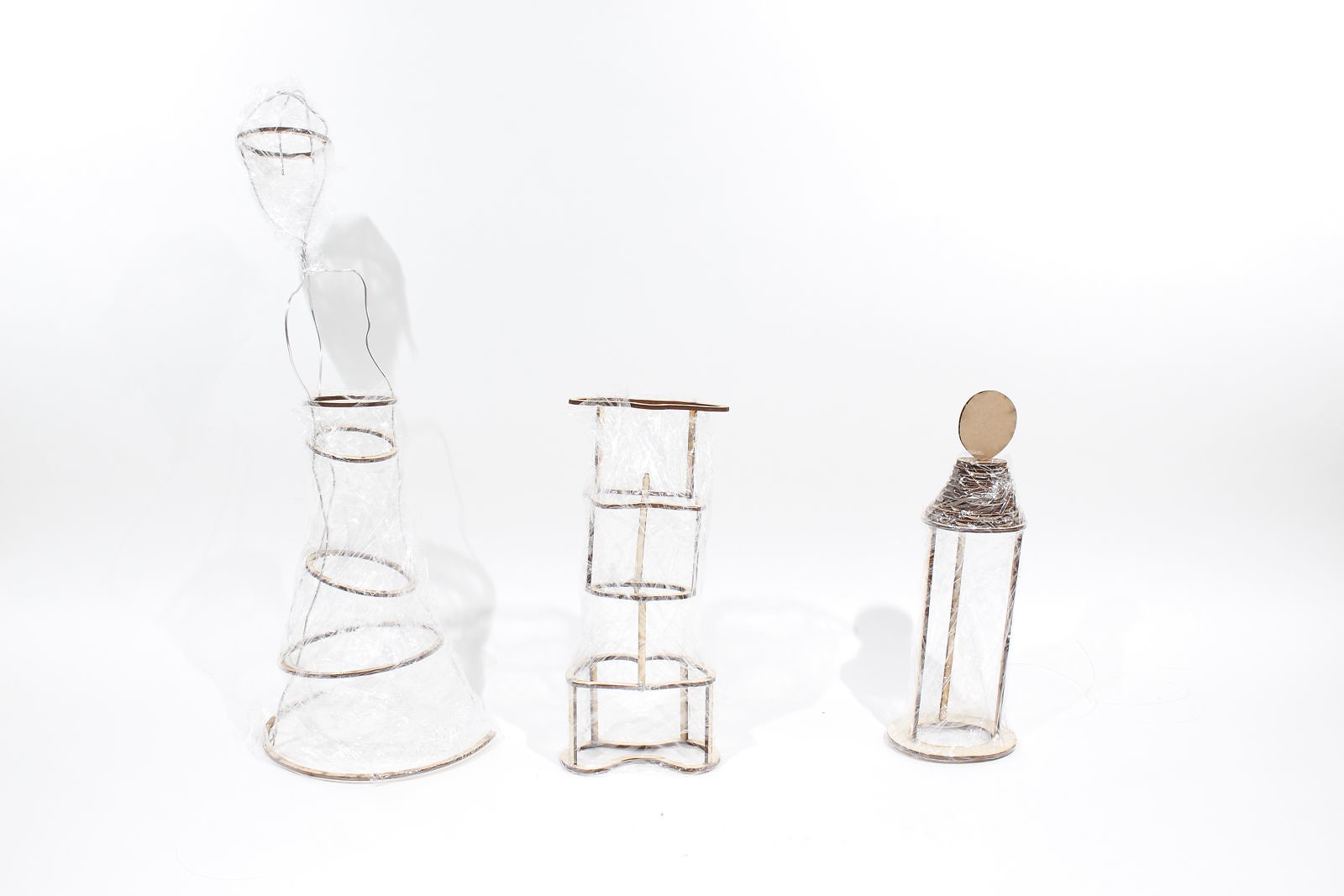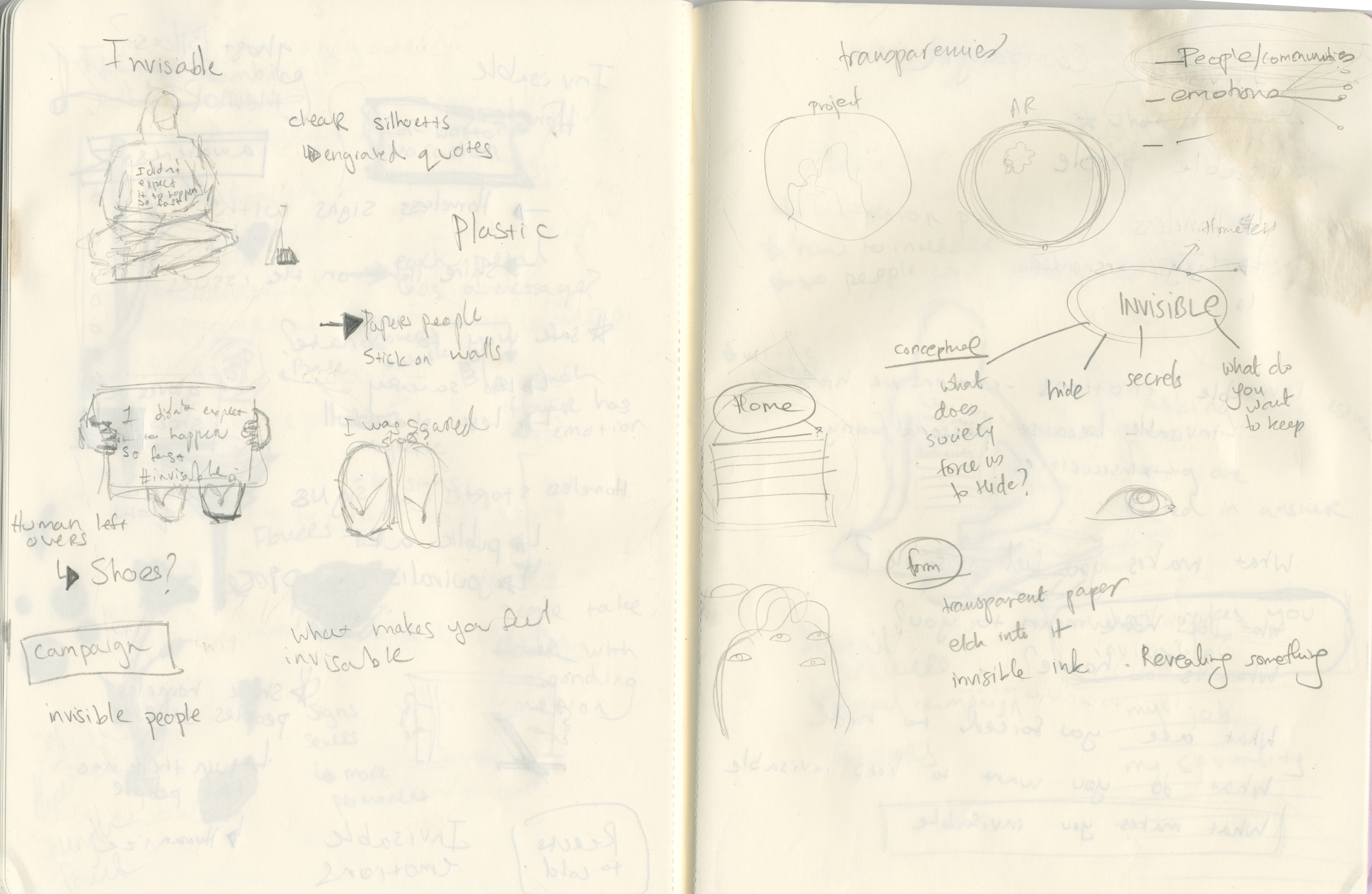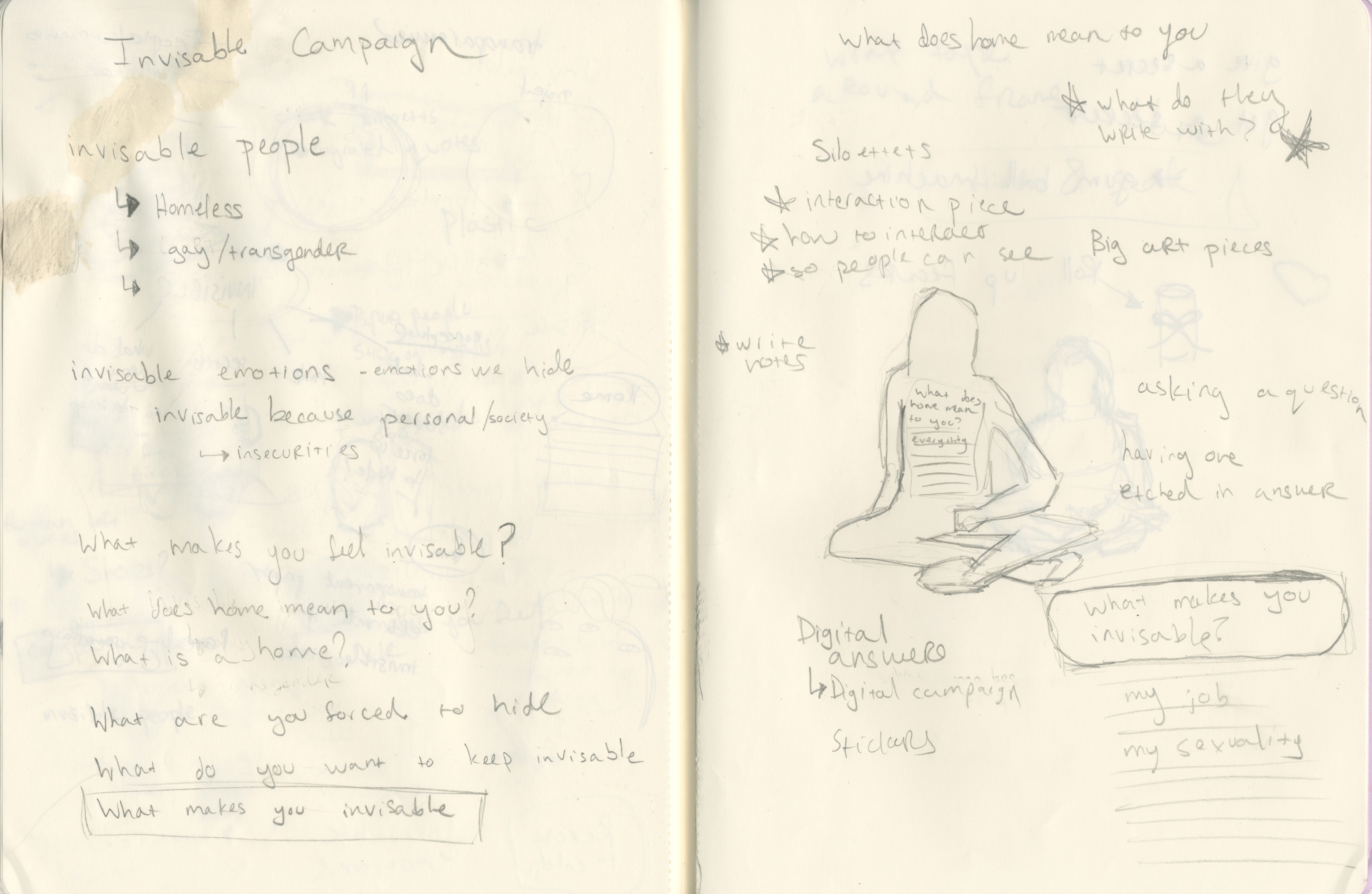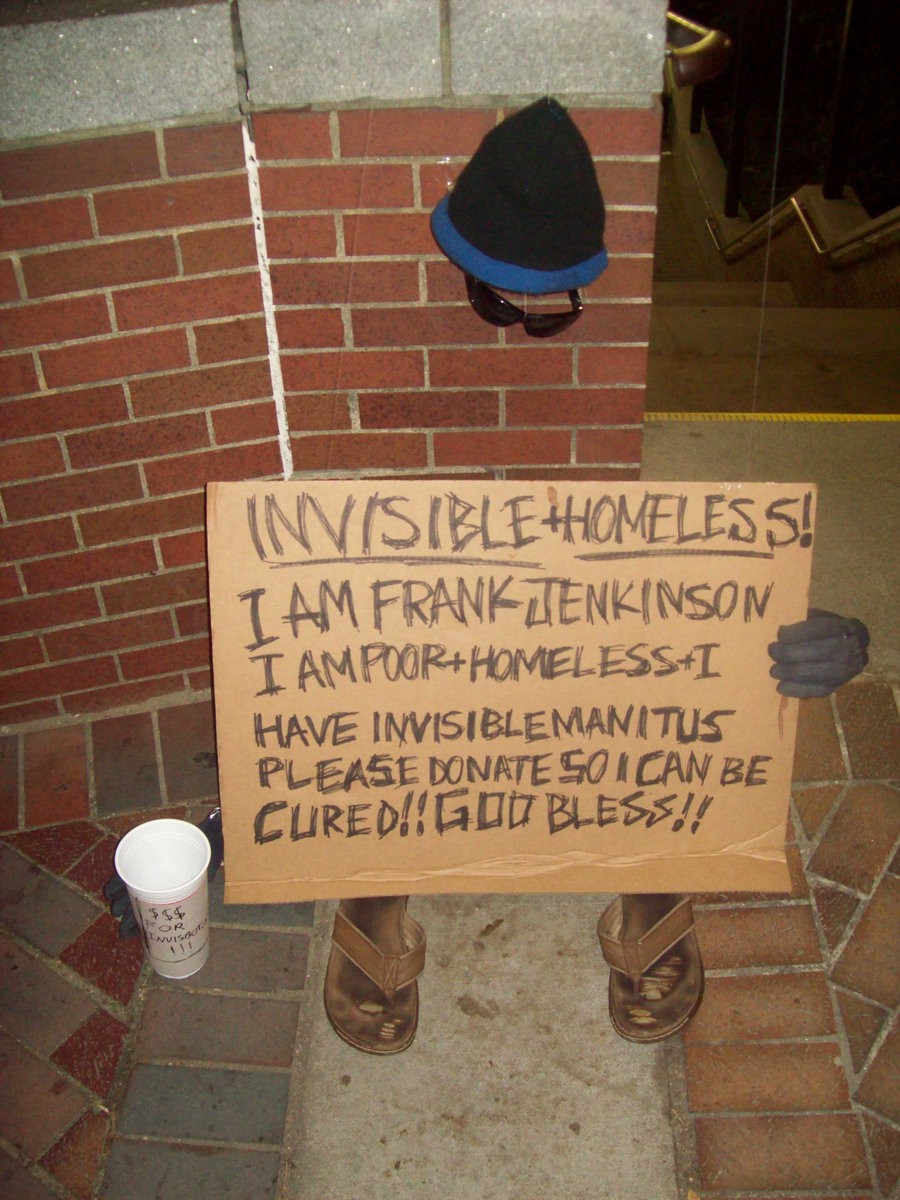-
Testing The Design
04/18/2016 at 16:07 • 0 commentsToday I started thinking about what the invisible sculpture will actually look like. My first rough thought to get my design process going, is to make a box in the shape of a silhouette in 2D. However, I immediately realize I’ll be moving towards a 3d sculpture.
In researching, I am inspired by the artist, Jin Young Yu, who does a lot of work with clear sculpture. I’m also excited by the concept of plastic wrap graffiti. Plastic wrap could be a good medium to use for the see-through part of the sculpture. Plastic wrap is cheap and abundant. I need to make a frame for the plastic wrap, though, so I started to explore making a frame out of plywood. I laser cut various shapes and started experimenting with body shapes. First I made a cone-like body shape just by hand, thinking it would look like a dress once I put the plastic wrap on it, but then I realized that it just looked like a cone, and not a dress at all.
For my next prototype I moved in the opposite direction, and made the frame from a scan of a manikin I found on Autodesk. I downloaded the scan and sliced it at certain intervals, then laser-cut those intervals to fit together like a statue. This frame turned out to be way too sexy. It was better in the sense that it looked like a human, but it was a very different vibe than what I was originally going for.
Moving forward, I want the statue to be bottle-shaped, so that it has shoulders and hips, but in a subtle way. I think it will be more beautiful this way, and more able to receive notes. I also want the frame to be much more minimal. My plan is layered plywood to define the shoulders, the neck, and the head. The head is going to be intricately laser cut out of layers of plywood.
As the invisibility sculpture turns more abstract, I’m thinking it would be nice if you actually put your thought donations into the heart of the sculpture. I am going to make the heart opening very beautiful with intricately cut acrylic on the laser cutter.
![]()
-
Refining The Concept
04/18/2016 at 16:04 • 0 commentsEnvisioning this art piece, I googled quotes from homeless people. They were things like,
“I feel very vulnerable,”
“They view us like dirt, like we deserve it, but it can happen to anyone.”
“When my mom and dad died everything fell apart.”
“No one sees us.”
What does it mean to be an invisible person, such as a homeless person? What does it mean to have invisible emotions? What emotions do we want to keep invisible? What emotions do we have to keep invisible due to social norms? As I started thinking about this bigger theme of invisibility, I realized that just centering this piece around homelessness closed off so many other feelings of invisibleness. I want this piece to be bigger.
I then re-envisioned the piece, still as a silhouette of a person, but with a question etched into the piece, “What makes you feel invisible?” There would be one answer etched in, by the person who is the silhouette, as a direction to the viewer. That answer could be anything-homelessness, sexuality, nationality, religion, violence. As people walk by, they would write an answer directly onto the art piece.
The problem with this design is it requires a lot of work; we would have to provide the chalk or white board marker, make sure it’s dry and clean, and maintain the piece. It would be critical that the answers are viewable to the public.
The next question is, how can the answer be viewable to the public, yet not require so much maintenance? What if the user wrote their response on a piece of paper and slid the paper into the silhouette? The problem here is that no one is going to stop on the side of the road, take out their notebook and a pen, and write in an answer to slip in. It is just not a realistic expectation.
I started to think of other solutions. Maybe the user tweets their answer, or Instagrams their answer. The problem there is that the user looses their anonymity.
Then I started to think about the intrigue. What would pull someone towards this art installment, and cause him or her to pause and look at this project? What would grab their attention and make them actually stop and write? I thought of a secret. The user would stop to write what makes them feel invisible, and in return they would receive a strangers answer to the same question. Almost like a gumball machine. I am very excited about this project on a larger scale. I picture this a nation-wide movement. #Invisible.
![]()
![]()
-
Starting Off
04/18/2016 at 16:00 • 0 commentsI go to school in Central Square in Cambridge, Massachusetts. It’s the sketchy part of town. Every day when I arrive at school, I wend my way through a maze of homeless people who are already on the street for the day. I chat with my regulars while keeping an eye out for new folks I don’t recognize. “Hi, Princess,” one calls to me. I say hi, yet don’t call him by his name, because we’ve never formally introduced ourselves. Another calls me Funky Backpack.
These are my people, my morning community, yet our lives are so very different. Just how different are we from one another? Life circumstances, personal choices, race, culture, sexuality: do these add up to life altering differences that separate us, or can they actually bring us closer together?
As a society, we tend to ignore homeless people. Many people are frightened of the homeless, but are they frightened by our differences or frightened by our shocking similarities? What if there was a way to shine light on a homeless person and their plight without the fears associated with actually speaking to one, which causes people to ignore them instead?
As I started thinking about this social problem, I came across a joke picture of an “invisible homeless” person. It was clothing, suspended in air, holding a sign asking for money. This picture inspired me to make a public art project to raise awareness of those struggling, to shake our consciousness into action.
![]()
Thinking of communication, I first thought of creating something with cardboard signs, maybe with quotes from homeless people written on them. But then I started thinking, what if it were a full, clear silhouette of a person, and etched on that silhouette was the homeless person quote? This would turn it into more of an art piece.
Invisible
A public art campaign inspiring people to share the differences that separate us, increasing social awareness and strengthening community.
 Kate Reed
Kate Reed


